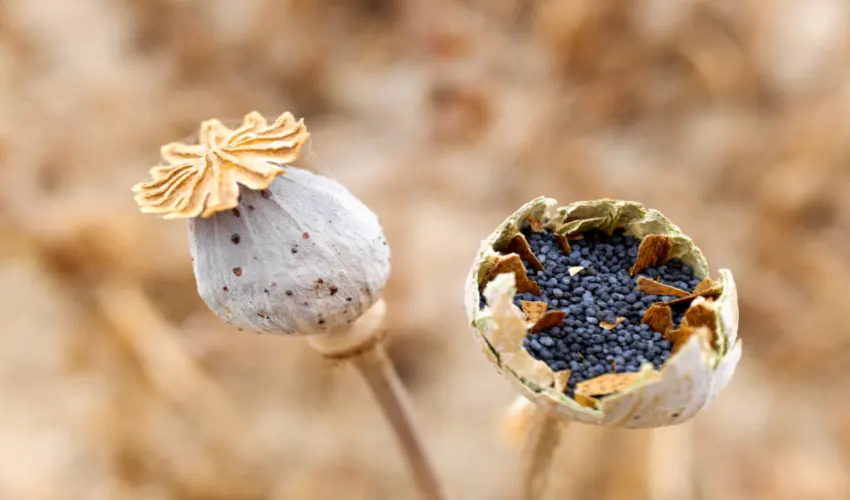
How to Harvest Poppy Pods Safely
Harvesting poppy pods can be a rewarding experience, whether you’re growing them for their beautiful flowers or for use in crafts and cooking. However, it’s important to approach the process with care, as poppies contain substances that could be harmful if mishandled. In this article, we’ll walk you through the steps for harvesting poppy pods safely, ensuring a successful and risk-free experience.
Understanding Poppy Plants
Poppies are iconic flowers, often associated with vivid colors and delicate petals. The most commonly grown poppy varieties are the Papaver somniferum species, which are cultivated both for ornamental purposes and for the production of dried poppy pods seeds and opium. It’s essential to understand the risks involved when dealing with these plants, especially when harvesting.
Why Harvest Poppy Pods?
Poppy pods can be harvested for a variety of reasons, such as:
- Crafting: Dried poppy pods are often used in wreaths, floral arrangements, and other home décor projects.
- Cooking: Poppy seeds harvested from the pods are used in baking and cooking, providing a subtle, nutty flavor.
- Opium Production: Though illegal in many countries, the poppy pods of Papaver somniferum contain opiates, which can be extracted for medicinal or illicit purposes. It’s crucial to be aware of the legal implications in your area before engaging in this activity.
When to Harvest Poppy Pods
The timing of the harvest is critical to ensure you get the best results. Poppy pods should be harvested when they have fully matured but before they start to dry out and crack open. This ensures that the seeds are still contained within the pod. Look for the following signs:
- The petals of the poppy flower have fallen off.
- The pod is swollen and firm to the touch.
- The color of the pod has transitioned from green to a light brown or tan shade.
If the pod is too early, you may not get viable seeds, and if you wait too long, the seeds may spill out, leaving you with an empty pod.
Tools You’ll Need
To harvest poppy pods safely, you’ll need a few simple tools:
- Sharp Shears or Scissors: A clean, sharp pair of shears or scissors will allow you to cut the stems without damaging the pods.
- Gloves: While not always necessary, wearing gloves can protect you from the sticky sap that may leak from the pods when cut.
- Drying Rack: If you plan to dry the pods for crafting or other uses, having a drying rack or clean surface for the pods to rest on is essential.
Step-by-Step Guide to Harvesting Poppy Pods Safely
Follow these steps for a safe and efficient harvest:
- Prepare Your Work Area: Choose a dry, well-lit area for harvesting, and lay out a clean surface to collect the pods.
- Wear Protective Gloves (optional): If you’re concerned about sap or handling poppies with latex content, it’s wise to wear gloves.
- Cut the Stems: Using your sharp shears or scissors, cut the stems about 3-4 inches below the base of the pod. Make sure to leave enough stem to handle the pod without damaging it.
- Place the Pods on a Drying Rack: After cutting, gently place the pods on a drying rack or a clean, dry surface. If you’re harvesting poppies for seeds, avoid disturbing the pods too much to prevent accidental seed loss.
- Let the Pods Dry: Allow the pods to dry out naturally in a cool, dry area. It can take several weeks for the pods to dry completely.
- Collect the Seeds: Once dry, carefully shake the pod over a container to collect the seeds. You can also break the pod open gently with your hands if necessary.
- Store the Pods and Seeds: Store the harvested poppy pods in a dry, cool place if using them for crafting. Poppy seeds can be stored in an airtight container for future use in cooking.
Handling Poppy Pods with Care
Poppies, especially Papaver somniferum, contain alkaloids such as morphine and codeine. Though the seeds are safe to eat and are commonly used in baking, the pods and other parts of the plant should be handled with caution. Avoid inhaling the dried pollen or smoke from burning the pods, as this can be harmful.
Be sure to dispose of any unused parts of the plant responsibly, especially if you’re growing poppies for opium production, as this may be illegal depending on your location. Always check local laws to ensure compliance with regulations regarding poppy cultivation and harvesting.
Legal Considerations
Before harvesting poppy pods, it’s crucial to be aware of the legal implications. In many regions, growing Papaver somniferum for opium extraction is strictly regulated or prohibited. Make sure you’re abiding by local laws when engaging in poppy cultivation. If you’re growing poppies for ornamental purposes or culinary use, check whether your local area has restrictions on the cultivation of these plants.
Conclusion
Harvesting poppy pods can be a fun and rewarding activity when done safely. By following the proper steps and ensuring you are aware of the risks, you can enjoy a successful harvest for crafting, cooking, or other purposes. Remember, always handle poppies with care and follow all applicable laws to ensure a safe and enjoyable experience.
